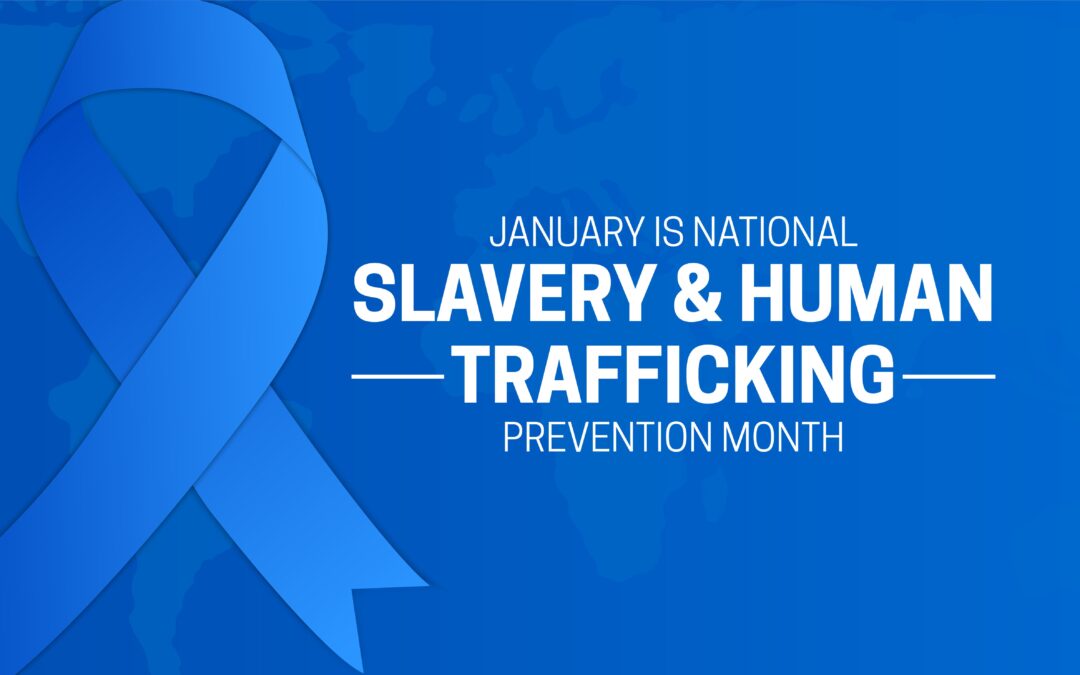January is a time of new beginnings and resolutions, but it also holds a deeper significance. It is designated as Slavery and Human Trafficking Awareness Month, a period dedicated to shedding light on the global epidemic of modern-day slavery. Human trafficking is a grave violation of human rights, affecting millions of people worldwide, and this awareness month serves as an opportunity to educate, advocate, and take action against this heinous crime. In this comprehensive guide, we will delve into the significance of Slavery and Human Trafficking Awareness Month, provide insights on how to help, and offer guidance on recognizing the signs of human trafficking.
The Significance of Slavery and Human Trafficking Awareness Month
1. Raising Awareness
Slavery and Human Trafficking Awareness Month provides a platform to raise awareness about human trafficking’s prevalence, its devastating impact on victims, and the urgent need for action. Awareness is the first step toward combating this hidden crime.
2. Empowering Advocacy
By designating a month to focus on the issue, Slavery and Human Trafficking Awareness Month empowers individuals, organizations, and communities to become advocates for change. It encourages people to speak out against human trafficking, support survivors, and demand stronger anti-trafficking measures.
3. Supporting Survivors
This month offers an opportunity to recognize and honor the strength and resilience of survivors of human trafficking. It’s a time to provide survivors with the resources, care, and support they need to rebuild their lives after escaping exploitation.
How You Can Help: A Call to Action
1. Educate Yourself
a. Understand the Issue: Begin by educating yourself about human trafficking. Learn about its different forms, such as sex trafficking and labor trafficking, and familiarize yourself with the signs.
b. Stay Informed: Stay updated on current anti-trafficking efforts, research, and legislation to better advocate for change.
2. Support Organizations
a. Donate: Many organizations dedicated to fighting human trafficking rely on donations to fund their critical work. Consider contributing to reputable anti-trafficking organizations.
b. Volunteer: Get involved in anti-trafficking initiatives in your community by volunteering your time and skills.
3. Advocate for Policy Change
a. Contact Your Representatives: Reach out to your elected officials to express your support for strong anti-trafficking legislation and policies.
b. Raise Awareness: Use your voice on social media and within your community to raise awareness about human trafficking and advocate for change.
4. Learn the Signs
a. Recognize Red Flags: Educate yourself on the signs of human trafficking, which can include control over victims, restricted movement, or signs of physical abuse.
b. Report Suspicious Activity: If you suspect someone may be a victim of human trafficking, report it to law enforcement or the National Human Trafficking Hotline at 1-888-373-7888.
5. Support Survivors
a. Trauma-Informed Care: Understand that survivors of human trafficking often experience severe trauma. Encourage the provision of trauma-informed care to support their healing process.
b. Offer Resources: Connect survivors to organizations that provide shelter, legal assistance, counseling, and job training to help them rebuild their lives.
Recognizing the Signs of Human Trafficking
Understanding the signs of human trafficking is essential for identifying potential victims and reporting suspicious activity. While the indicators can vary depending on the type of trafficking, here are some common red flags:
1. Physical Indicators
- Signs of physical abuse: Bruises, burns, or other unexplained injuries.
- Malnourishment or dehydration: Victims may appear emaciated or severely dehydrated.
- Poor hygiene: Neglect of personal grooming and hygiene.
2. Behavioral Signs
- Controlled movement: Victims may be closely monitored or accompanied by a controlling individual.
- Fear and anxiety: Victims may exhibit signs of fear, anxiety, or depression.
- Submissive behavior: Victims may appear submissive or fearful of authorities.
3. Exploitative Work Conditions
- Excessive working hours: Victims may be forced to work long hours in exploitative conditions.
- Lack of personal documents: Traffickers often confiscate victims’ identification and travel documents.
- Inadequate pay: Victims may not receive fair compensation for their work.
4. Sexual Exploitation
- Involvement in the commercial sex industry: Victims may be forced into prostitution or other forms of sexual exploitation.
- Control by a third party: Victims may be controlled by a pimp or trafficker.
5. Online Exploitation
- Online presence: Victims may be coerced or manipulated into posting sexual content or performing sexual acts online.
- Secrecy and isolation: Victims may avoid discussing their online activities or personal relationships.
Slavery and Human Trafficking Awareness Month
Slavery and Human Trafficking Awareness Month serves as a crucial reminder of the ongoing struggle against human trafficking. By educating ourselves, supporting organizations, advocating for policy change, and learning to recognize the signs of trafficking, we can play an active role in combating this grave violation of human rights. Our collective efforts can help survivors find the support they need and contribute to a world where exploitation and slavery are relics of the past.

